Heather Eicher-Miller
Automatic Recognition of Food Ingestion Environment from the AIM-2 Wearable Sensor
May 13, 2024


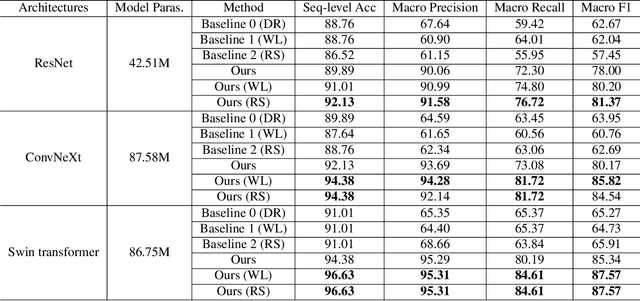
Abstract:Detecting an ingestion environment is an important aspect of monitoring dietary intake. It provides insightful information for dietary assessment. However, it is a challenging problem where human-based reviewing can be tedious, and algorithm-based review suffers from data imbalance and perceptual aliasing problems. To address these issues, we propose a neural network-based method with a two-stage training framework that tactfully combines fine-tuning and transfer learning techniques. Our method is evaluated on a newly collected dataset called ``UA Free Living Study", which uses an egocentric wearable camera, AIM-2 sensor, to simulate food consumption in free-living conditions. The proposed training framework is applied to common neural network backbones, combined with approaches in the general imbalanced classification field. Experimental results on the collected dataset show that our proposed method for automatic ingestion environment recognition successfully addresses the challenging data imbalance problem in the dataset and achieves a promising overall classification accuracy of 96.63%.
Long-tailed Food Classification
Oct 26, 2022Abstract:Food classification serves as the basic step of image-based dietary assessment to predict the types of foods in each input image. However, food image predictions in a real world scenario are usually long-tail distributed among different food classes, which cause heavy class-imbalance problems and a restricted performance. In addition, none of the existing long-tailed classification methods focus on food data, which can be more challenging due to the lower inter-class and higher intra-class similarity among foods. In this work, we first introduce two new benchmark datasets for long-tailed food classification including Food101-LT and VFN-LT where the number of samples in VFN-LT exhibits the real world long-tailed food distribution. Then we propose a novel 2-Phase framework to address the problem of class-imbalance by (1) undersampling the head classes to remove redundant samples along with maintaining the learned information through knowledge distillation, and (2) oversampling the tail classes by performing visual-aware data augmentation. We show the effectiveness of our method by comparing with existing state-of-the-art long-tailed classification methods and show improved performance on both Food101-LT and VFN-LT benchmarks. The results demonstrate the potential to apply our method to related real life applications.
Towards the Creation of a Nutrition and Food Group Based Image Database
Jun 05, 2022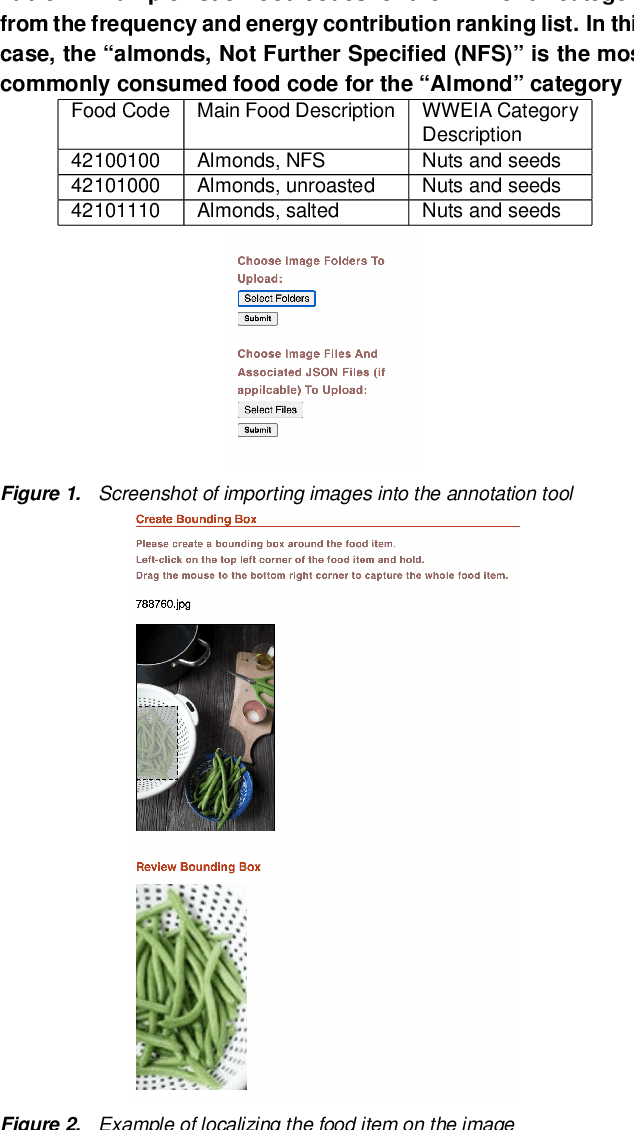
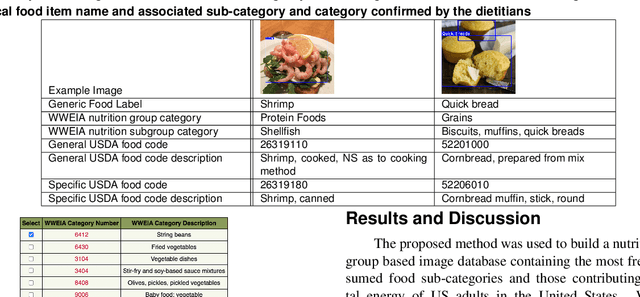
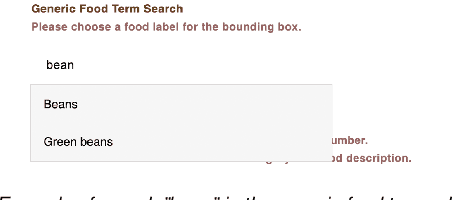
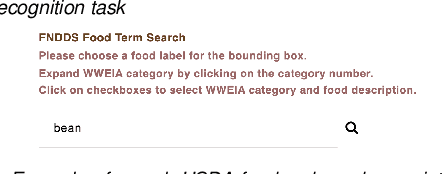
Abstract:Food classification is critical to the analysis of nutrients comprising foods reported in dietary assessment. Advances in mobile and wearable sensors, combined with new image based methods, particularly deep learning based approaches, have shown great promise to improve the accuracy of food classification to assess dietary intake. However, these approaches are data-hungry and their performances are heavily reliant on the quantity and quality of the available datasets for training the food classification model. Existing food image datasets are not suitable for fine-grained food classification and the following nutrition analysis as they lack fine-grained and transparently derived food group based identification which are often provided by trained dietitians with expert domain knowledge. In this paper, we propose a framework to create a nutrition and food group based image database that contains both visual and hierarchical food categorization information to enhance links to the nutrient profile of each food. We design a protocol for linking food group based food codes in the U.S. Department of Agriculture's (USDA) Food and Nutrient Database for Dietary Studies (FNDDS) to a food image dataset, and implement a web-based annotation tool for efficient deployment of this protocol.Our proposed method is used to build a nutrition and food group based image database including 16,114 food images representing the 74 most frequently consumed What We Eat in America (WWEIA) food sub-categories in the United States with 1,865 USDA food code matched to a nutrient database, the USDA FNDDS nutrient database.
 Add to Chrome
Add to Chrome Add to Firefox
Add to Firefox Add to Edge
Add to Edge